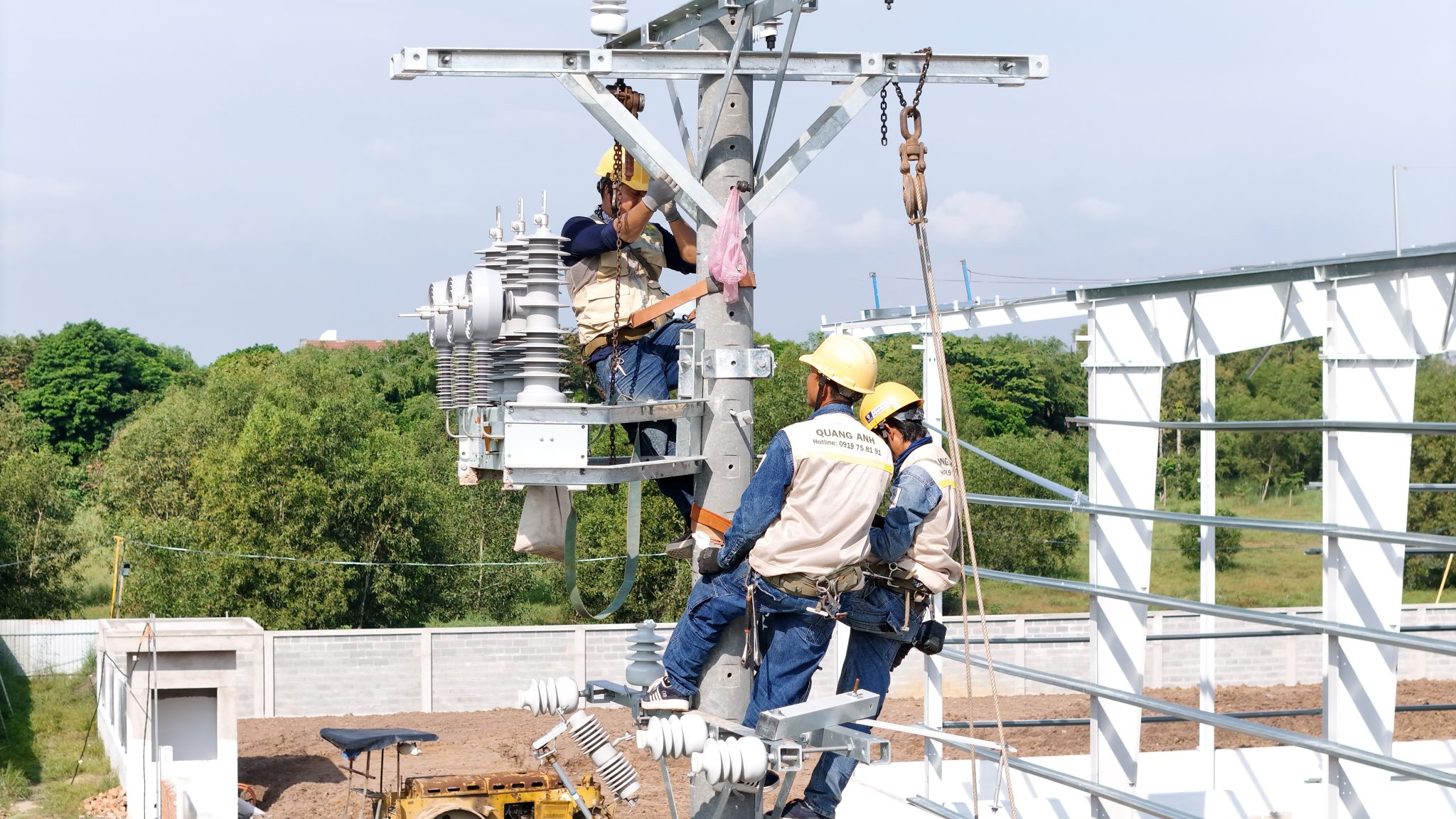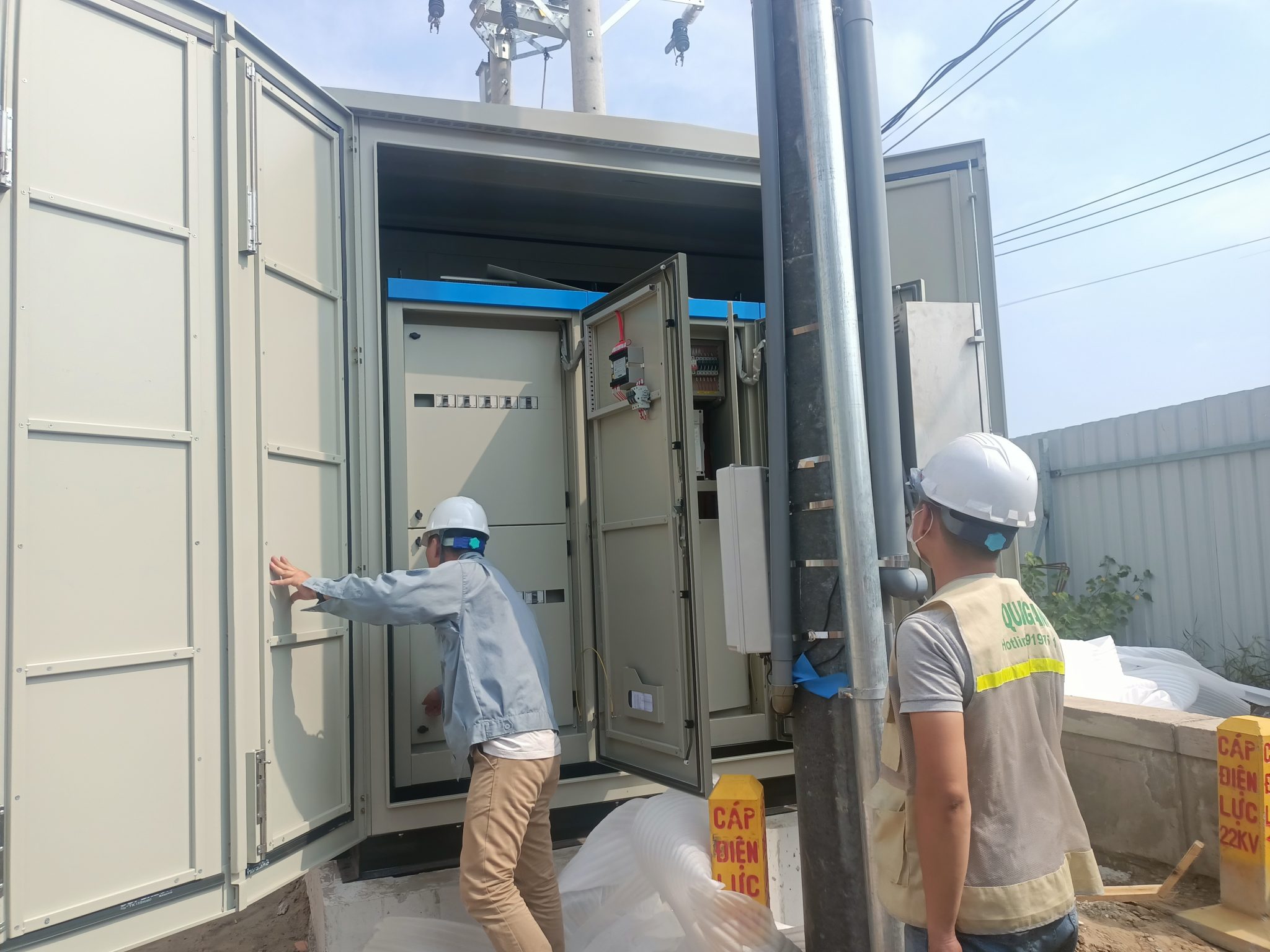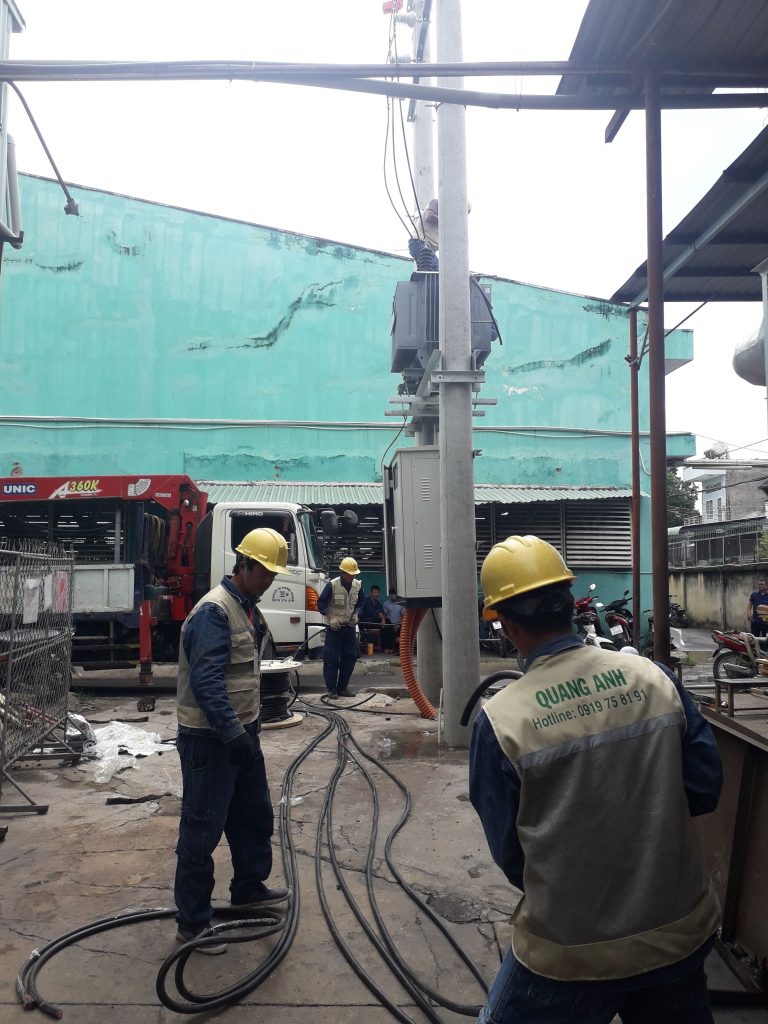News
Effective and Safe Workshop Electrical System Design
Designing a workshop electrical system is a complex process requiring meticulousness and adherence to technical standards to ensure safety and operational efficiency.
Steps to Design a Safe and Efficient Electrical System
The design process of a workshop electrical system begins with an on-site survey to gather project information such as installation area, factory scale, and the number of machines. Next, the design of the high-voltage and low-voltage network is carried out by determining the position and type of appropriate poles, ensuring safe distances. Finally, the design of the industrial lighting system and flexible reactive power compensation systems optimize efficiency and reduce energy losses.
Designing a safe and efficient electrical system requires a detailed and methodical process. First, surveys and requirement receptions are necessary to determine the functionality of the project by classifying constructions like workshops or buildings and collecting technical information such as layout, scale, and installation location. This is crucial for accurately determining the electricity demand for each area.
Next, the calculation of electrical load begins by determining the calculated load (PTTT) to ensure the system can fully meet the consumption requirements of the areas. This includes grouping devices by capacity and function to optimize power distribution.
Another important part of the electrical system is designing the lighting system. Calculating the lighting level and allowable capacity selects lights complying with TCVN standards, ensuring even light distribution and avoiding energy waste.
In addition, designing outlet and switch locations plays an important role. Installation locations must be determined based on equipment usage needs in different areas such as offices, kitchens, or production areas, calculating the required number and power of outlets.
Selecting conductors and protective devices is indispensible in electrical system design. Determining wire cross-section based on rated current and allowable voltage drop, and selecting suitable MCCB/RCBO switchgear ensures system safety from electrical failures.
The design of power compensation systems is equally important in reducing the power factor to an optimal range from 0.9 to 0.95, minimizing energy losses. Choosing an automatic compensation cabinet helps flexibly compensate for reactive power.
Lightning protection and grounding systems must be carefully designed. The installation of lightning rods should ensure the protective radius of the structure, while the grounding system must achieve a grounding resistance ≤10Ω to ensure electrical safety.
Finally, transformers and backup generators must be selected with sufficient capacity to meet PTTT requirements, ensuring reserve capacity for important loads during power outages.
Through the detailed design steps as above, the electrical system will operate safely and efficiently, minimizing safety risks. This detailed design must also comply with international standards like IEC and TCVN to ensure the highest level of system safety and efficiency.

Essential Components of Workshop Electrical Systems
The main components in the workshop electrical system include the construction of cable tray systems for securing and protecting electrical cables. Following is the installation of industrial electrical cabinets responsible for connecting the entire main cable trunk, ensuring compliance with technical and aesthetic standards. Finally, the installation of light electrical systems such as lighting, surveillance cameras, and fire alarm systems enhances safety and convenience in the workshop.
The workshop electrical system plays a crucial role in ensuring safe and efficient production. Building a rational workshop electrical system not only focuses on technical standards but also meets safety requirements. The focus of this system includes three main components: heavy electrical systems, light electrical systems, and lighting systems.
Heavy Electrical Systems
The heavy electrical system plays a central role in supplying power to industrial machines and equipment. It includes the following important components:
-
Transformers, Medium and Low Voltage Electrical Cabinets: Transformers convert electricity from high to low levels appropriate for workshop needs. Medium and low voltage cabinets safely distribute electricity to each circuit and device.
-
Generators, Switchgear: To ensure continuous operation, backup generators are installed in advance. Automatic switchgear helps switch between main and auxiliary sources in case of an outage.
-
Electrical Distribution Cabinets: These industrial electrical cabinets protect and distribute electricity to production equipment, ensuring operator safety by isolating electrical parts.
Light Electrical Systems
Light electrical systems mainly consist of devices like network cables, security camera systems, and telecommunications devices. Although they do not consume much energy, this system plays an important role in managing and monitoring the workshop.
Lighting Systems
Industrial lighting systems provide sufficient lighting for production activities. It includes LED lights, fluorescent lights, and specialized lighting systems, ensuring a safe and efficient working environment.
Design and Installation Considerations
When designing and installing, the workshop electrical system must comply with safety standards to prevent electrical short circuits and fires. The selection of suitable equipment and materials is also very important to optimize maintenance costs and extend the system’s lifespan.

Safety and Quality Standards in Electrical System Design
Electrical Safety is ensured through system designs that do not pose danger to users. International quality equipment is a key factor, along with performance optimization to minimize energy loss. In the design process, precise calculation of load demand is necessary, as well as adherence to environmental protection regulations.
Safety standards for electrical systems are the foundation to design and install systems that ensure user safety and efficiency. Understanding and complying with these standards is essential for any business operating in the electrical engineering field.
Standard TCVN 9206:2012
Design and installation of electrical equipment in civil constructions must follow TCVN 9206:2012. This standard ensures:
- Reliable power supply: Ensuring all users receive stable and continuous electricity.
- Voltage: Use voltage of 380/220 V for all electrical equipment, unless motors require otherwise.
- Power supply for motors: Motors must be powered from a directly grounded neutral grid to minimize risks.
- Reserve capacity: Must always have at least a 5% reserve capacity to meet unexpected demands.
Standard IEC 62351
IEC 62351 plays a crucial role in protecting electrical systems from security threats. This standard outlines necessary security structures and processes to safeguard electrical systems from attacks via networks.
Standard TCXDVN 394:2007
For construction projects, TCXDVN 394:2007 prescribes safety requirements in electrical equipment design and installation. This also includes the naming and definition of necessary terms to ensure safety throughout construction and operation.
General Safety Requirements
- Safe grounding systems: All electrical equipment must have standardized grounding systems to prevent shock accidents.
- Grounding resistance: Must ensure values according to standards to maintain electrical safety.
- Lightning protection: Necessary to protect substations and distribution equipment, especially those installed outdoors.
Complying with these electrical system safety standards not only helps protect people and property but also ensures stable and sustainable system operation. Standards like TCVN 9206:2012 and IEC 62351 lay the foundation for developing safe and efficient electrical systems that meet modern technical needs.

Designing a workshop electrical system not only ensures safety and operational efficiency but also optimizes investment costs, enhances technical value, and supports sustainable development strategies.
Contact QuangAnhcons via Hotline: +84 9 1975 8191 for professional workshop electrical system design consultation.
QuangAnhcons provides comprehensive workshop electrical system design services, from on-site surveys to construction, ensuring the highest safety and efficiency.

 Tiếng Việt
Tiếng Việt 简体中文
简体中文 Deutsch
Deutsch 日本語
日本語 한국어
한국어 ไทย
ไทย Русский
Русский Français
Français
